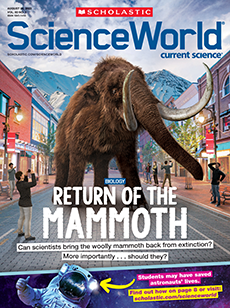Some experts think the limited availability of space and resources needed to run data centers may force companies to develop AI that’s more energy efficient. That could potentially reduce the amount of greenhouse gases these tools produce. In fact, a new AI called DeepSeek created by a Chinese company has shown it’s possible for this technology to use far less energy than originally believed.
AI tools themselves could also help other industries reduce emissions. The technology could, for example, find ways to make construction, transportation, and agriculture more energy efficient. AI is also helping to locate new sources of geothermal energy—a type of clean, renewable energy produced by underground heat. And it can also help scientists monitor melting ice and deforestation and improve prediction of hurricanes and wildfires. “There are plenty of examples of real-world benefits from these tools,” says Koomey. But as to whether AI will be more helpful or harmful to the environment remains to be seen.
Luccioni says people—including you—should consider AI’s pros and cons when making decisions about its use. For instance, you don’t need to turn to a sophisticated AI tool, like ChatGPT, to help you solve a math problem. All you need is a pencil and paper or a calculator. “Just thinking about the environmental impacts of our actions, including using AI, is a good start,” says Luccioni.

